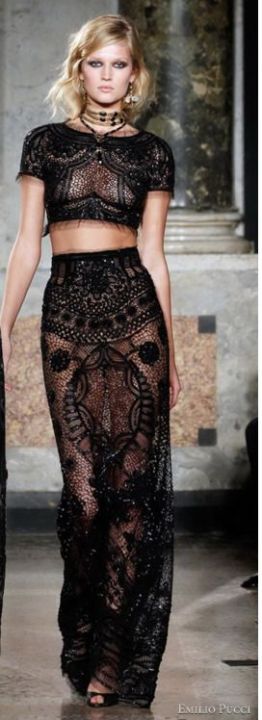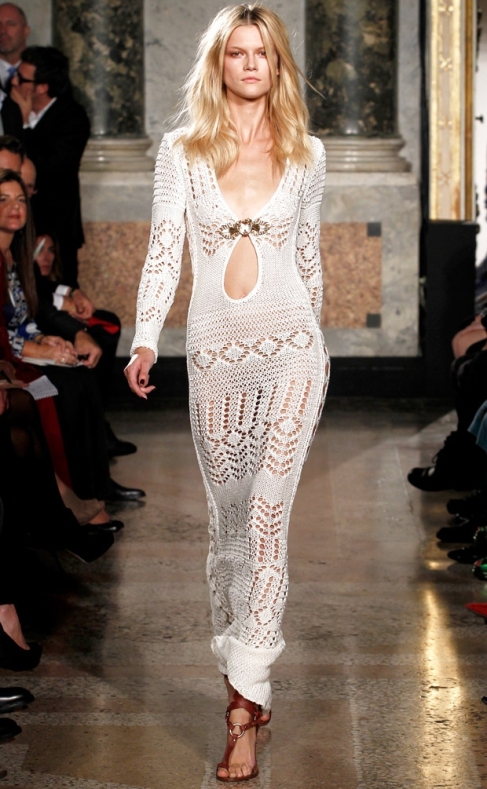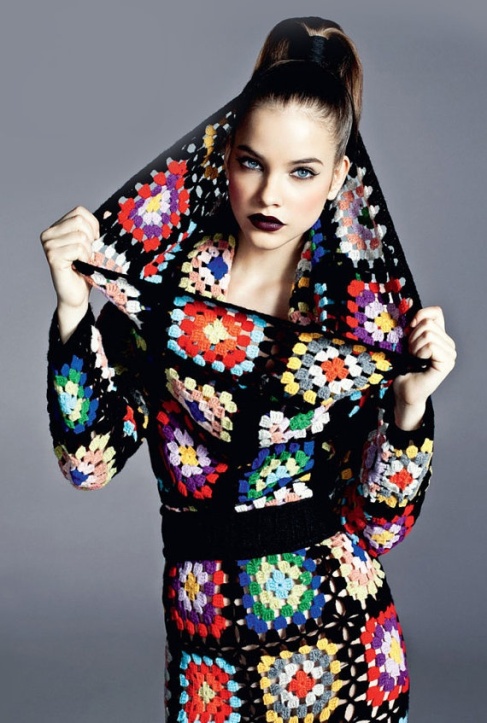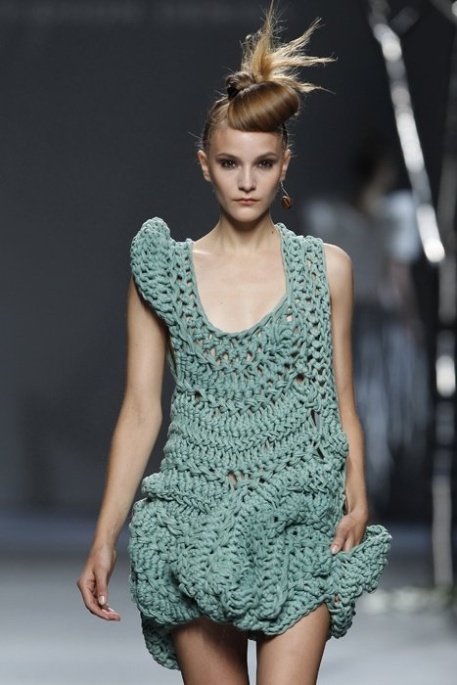Crocheted materials are always pretty. Anything crocheted, be it blankets, sweaters, dresses, doilies, etc., radiate a soft, feminine, peaceful vibration. Cool, calm and collected: crochet!
Crochet is a process of creating fabric from yarn, thread or other material strands using a crochet hook. The word is derived from the French word “crochet”, meaning hook, diminutive of croche, feminine of croc, of Germanic origin.
Crocheted garments emit a unique, attractive and alluring look!
Crocheting garments consists of pulling loops through other loops, but additionally incorporates wrapping the working material around the hook one or more times. Crochet differs from knitting in that with crocheting, only one stitch is active at one time, stitches made with the same diameter of yarn are comparably taller, and a single crochet hook is used, instead of two knitting needles. Crocheted dresses look suave and mod on any body.


Crochet Early History Fun Fact: In the 19th century, as Ireland was facing the Great Irish Famine (1845-1849), crochet lace work was introduced as a form of famine relief (the production of crocheted lace being an alternative way of making money for impoverished Irish workers). Mademoiselle Riego de la Blanchardiere is generally credited with the invention of Irish Crochet, publishing the first book of patterns in 1846. Irish lace became popular in Europe and America, and was made in quantity until the first World War.
Today, crocheted patterns are an extremely popular fixture in the clothing and the handbag business.
Carry your handy and essential items in modern, trendy fashion by storing your needed necessities in the cool, crocheted purse that you are carrying.
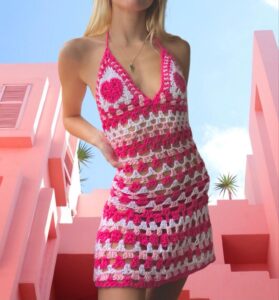

Basic Materials Needed to Crochet a Dress Yourself:
- A Crochet Hook
- Yarn or Thread
- A Cardboard Cut Out – Modeling the garment that you wish to crochet
- Tassels, Fringe, or Decorative Items
- A Tape Measure and a Guage Measure (used for counting stitches)
A crochet hook comes in many sizes and materials, such as bone, bamboo, aluminum, plastic and steel. Sizing is categorized by the diameter of the hook’s shaft, and a crafter aims to create stitches of a certain size, in order to reach a particular gauge specified in a given pattern.
Crochet Hook Fun Fact: Crochet hooks range in size from 0.4 to 3.5 millimeters, or from 00 to 16 in American sizing.
Hook crocheted clothing will definitely hook you in!
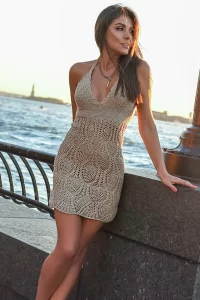
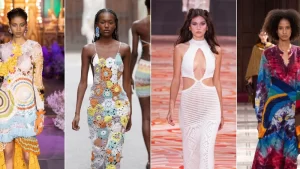
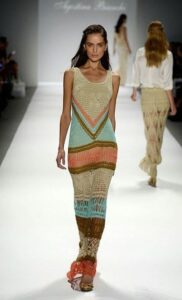
Crocheted dresses, in addition to looking fabulous and festive, are a perfect attire to wear to fancy dress occasions. Crocheted clothing makes a head turning, fashion statement when worn to parties, holiday celebrations, wedding showers, baby showers, etc.
Crocheted garments look stellar whether the entire outfit is one single color, or whether your diva body is dressed in colorful yarn splendor!
Crocheting Process: Crocheted fabric is begun by placing a slip-knot on the hook, pulling another loop through the first loop, and repeating this process to create a chain of a suitable length. The chain is either turned and worked in rows, or joined to the beginning of the row with a slip stitch and worked in rounds. Stitches are made by pulling one or more loops through each loop on the chain. At any one time, at the end of a stitch, there is only one loop left on the hook!
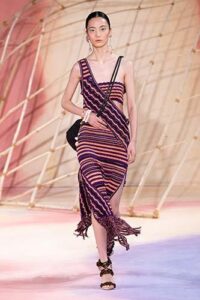

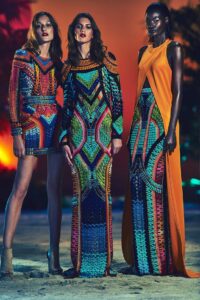
Do you want to make your own clothes yet you don’t know how to sew? No problem! Crochet your way to stylish, splendid runway exquisiteness! Can fashion be more fun?
Many crochet stitches can only be crafted by hand, but the final product is worth your time, as the finished look is grand.
Pick up that crochet hook and hook yourself some new clothes! I guarantee you, a completed, stitched in vogue, crocheted dress, and you’ll be permanently hooked.

Nancy Mangano is an American fashion journalist, screenwriter and author of the Natalie North murder mystery book series. Visit Nancy on her global online fashion/style/beauty magazine Nancy Marie Mangano Style at https://nancymariemangano.com, her Facebook page Nancy Mangano at https://www.facebook.com/nancymmangano/ Twitter @https://twitter.com/nancymangano and her author website http://nancymangano.com

